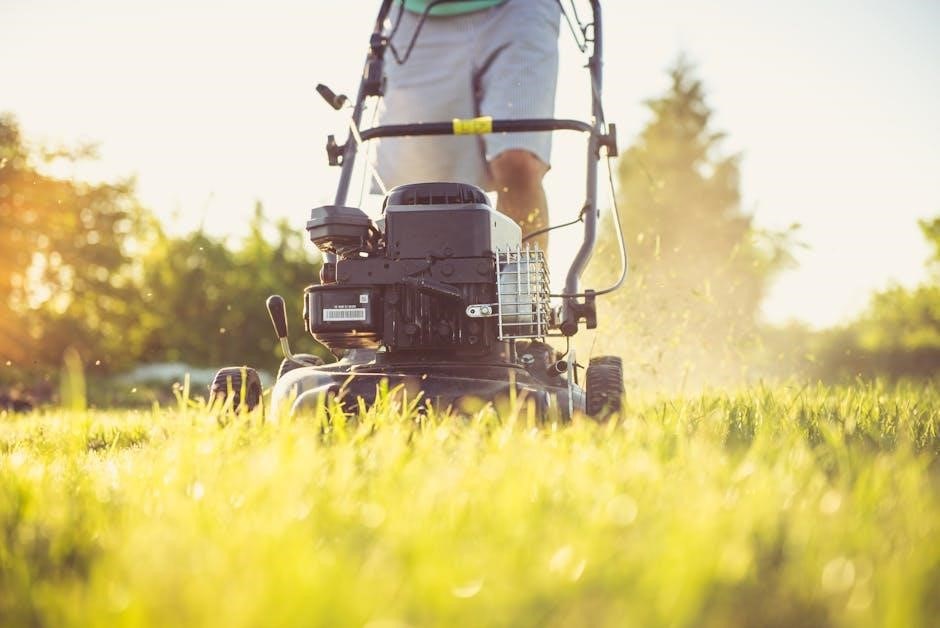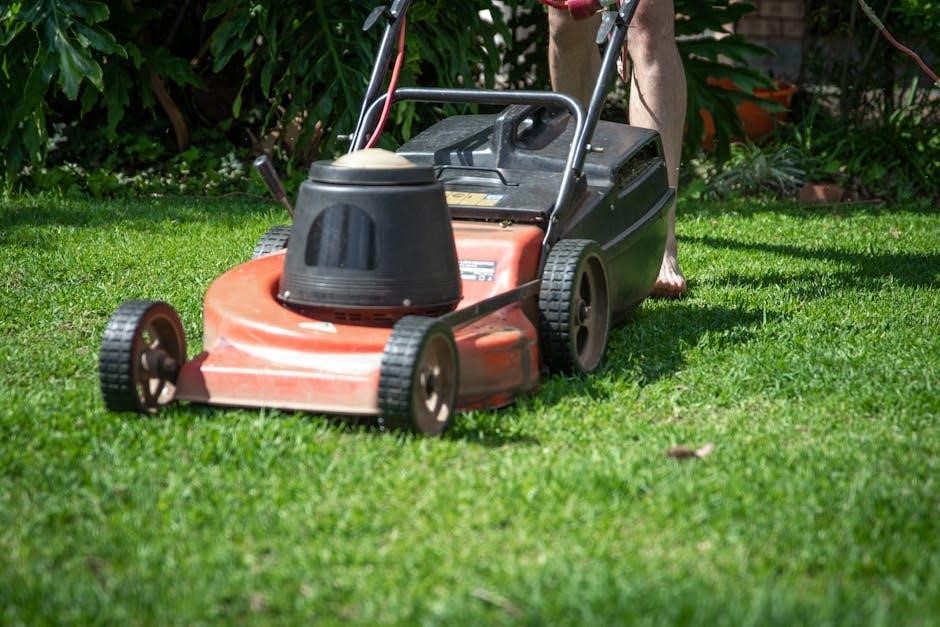The Rumble Jar is an innovative Cold Brew Coffee Kit that simplifies brewing at home using a mason jar design. Popular for its ease of use and flavorful results, it has become a favorite among coffee enthusiasts looking to make perfect cold brew effortlessly.
Overview of the Rumble Jar and Its Purpose

The Rumble Jar is a Cold Brew Coffee Kit designed to simplify the brewing process at home. Its innovative design combines a mason jar with a specialized filter, making it easy to create smooth, flavorful cold brew coffee. Perfect for coffee enthusiasts, the Rumble Jar eliminates the need for complex equipment, allowing users to steep, serve, and enjoy high-quality cold brew effortlessly. Its compact size and user-friendly approach have made it a popular choice for both beginners and experienced brewers.
Why Choose Rumble Jar for Cold Brew Coffee
The Rumble Jar stands out for its simplicity and effectiveness in making cold brew coffee. Its unique design combines a mason jar with a built-in filter, eliminating the need for bulky equipment. This kit is perfect for those who want a hassle-free brewing experience without compromising on flavor. Additionally, the Rumble Jar is easy to clean and store, making it a practical choice for both home use and on-the-go convenience. Its compact design and durability ensure long-lasting performance, making it a favorite among coffee lovers of all levels.

Materials and Equipment Needed
The Rumble Jar Cold Brew Kit includes a mason jar and a built-in filter. Additional tools like a coffee grinder, measuring cup, and water source are recommended.
Essential Components of the Rumble Jar Kit
The Rumble Jar kit includes a durable mason jar, a reusable stainless steel filter, and a lid. These components are designed to make cold brew coffee effortlessly at home, ensuring a smooth and flavorful extraction without grounds in the final brew. The filter’s design allows for easy loading and locking, while the jar’s size accommodates the perfect coffee-to-water ratio for optimal taste.
Additional Tools Required for Brewing
Beyond the Rumble Jar kit, you’ll need a coffee grinder for fresh grounds, a measuring tool for precise coffee-to-water ratios, and a spoon or scoop for handling grounds. A separate container for storing the brewed coffee is also recommended. These tools ensure a seamless brewing experience, allowing you to achieve the perfect cold brew flavor with ease and consistency.
Step-by-Step Brewing Instructions
Brewing with the Rumble Jar is straightforward. Follow the simple steps: load the filter, add coffee and water, steep, and clean up for a perfect cold brew.
Step 1: Load and Lock the Filter
Begin by loading the filter into the Rumble Jar. Ensure it’s securely locked to prevent grounds from escaping. This step ensures a clean brew and prevents any sediment from entering the final product, making the brewing process smoother and more efficient. Properly securing the filter is crucial for the best results and to maintain the quality of your cold brew coffee. This initial step sets the foundation for a flawless brewing experience.
Step 2: Add Coffee Grounds and Water
After securing the filter, add your preferred amount of coffee grounds to the Rumble Jar. Use a medium to coarse grind for optimal extraction. Pour fresh, cold water over the grounds, ensuring all coffee is fully saturated. Avoid stirring immediately to prevent grounds from escaping the filter. This step ensures even extraction and sets the stage for a smooth, flavorful brew. Properly measuring and saturating the grounds is key to achieving the perfect cold brew. Allow the mixture to steep undisturbed for the recommended time.
Step 3: Steep and Wait
Once the coffee grounds and water are combined, allow the mixture to steep in the refrigerator for 12 to 24 hours. Keep the jar away from direct light and heat to ensure a smooth extraction. During this time, the coffee infuses into the water, creating a rich, full-bodied brew. Avoid disturbing or stirring the mixture, as this could disrupt the process. After steeping, your cold brew will be ready to strain and serve, offering a refreshing and flavorful coffee experience.
Step 4: Clean Up and Serve
Once the steeping process is complete, carefully pour the cold brew into a serving container, leaving the grounds behind. Discard the used coffee grounds and rinse the filter thoroughly. For a cleaner finish, use the Swirl-and-Dump rinsing method to remove any remaining grounds. Serve the cold brew over ice or straight from the jar. For storage, keep it refrigerated to maintain freshness. Enjoy your perfectly brewed coffee and repeat the process for future batches!

Coffee Grinding and Measurement Tips

Optimal results require a medium-coarse grind to prevent over-extraction. Use a 1:4 to 1:5 coffee-to-water ratio for a smooth, balanced flavor. Adjust to your preference.
Optimal Grind Size for Cold Brew
The ideal grind size for cold brew is medium-coarse, similar to kosher salt. This texture ensures proper extraction without over-saturation. A burr grinder is recommended for consistency. Avoid fine grinds, as they can lead to a bitter taste and cloudiness in the final brew. Proper grind size is crucial for achieving a smooth, balanced flavor with the Rumble Jar. Adjust the grind to suit your taste preferences for the best results.
Recommended Coffee-to-Water Ratio
The ideal coffee-to-water ratio for cold brew is 1:4. Use 115 grams of coffee for every 4 cups of water. Adjust to your taste, but this ratio ensures a balanced flavor. A standard 1:4 ratio yields smooth, rich results. Experiment with stronger or weaker ratios if desired, but start with this classic measurement for optimal flavor extraction. This ratio is key to achieving the perfect cold brew with the Rumble Jar.

Cleaning and Maintenance
Regularly rinse the Rumble Jar with warm water after use. For tough residue, soak in mild soap and water. Avoid harsh chemicals to maintain longevity and flavor integrity.
Proper Cleaning Techniques
After each use, rinse the Rumble Jar and filter basket with warm water to remove residual coffee oils and grounds; For tougher residue, soak components in mild soap and water. Use a soft brush to scrub the filter if needed. Avoid using bleach or abrasive cleaners, as they can affect the taste of future brews. Regularly sanitizing with hot water helps maintain hygiene. Proper cleaning ensures optimal performance and longevity of your Rumble Jar.
Storage and Maintenance Tips
After brewing, rinse and dry the Rumble Jar and filter thoroughly to prevent moisture buildup. Store the jar in a cool, dry place, away from direct sunlight. Regularly inspect the jar and filter for signs of wear or damage. Replace the filter periodically to ensure optimal performance. Avoid exposing the components to extreme temperatures or harsh chemicals, as this can affect durability and flavor. Proper storage and maintenance will extend the life of your Rumble Jar and keep it functioning perfectly for future brews.
Troubleshooting Common Issues
Common issues include grounds in the final brew and inconsistent flavor. Adjust steeping time, ensure proper filtering, and rinse thoroughly to resolve these issues effectively.
Resolving Grounds in the Final Brew
If grounds appear in your final brew, ensure the filter is securely locked during steeping. After brewing, swirl the jar gently and dump the excess water to remove loose grounds. Rinse the filter thoroughly to prevent residue. For optimal results, use medium to coarse coffee grounds, as finer grinds may pass through the filter. Regularly clean the filter to maintain its effectiveness and prevent sediment in your brew.
Adjusting Steeping Time for Flavor
Steeping time significantly impacts the flavor of your cold brew. For a smoother taste, steep for 12–14 hours. For a bolder flavor, extend to 16–18 hours. Adjust based on personal preference and coffee strength. If the brew is too weak, increase steeping time slightly. Conversely, reduce time for a lighter flavor. Ensure the jar is refrigerated during steeping to prevent over-extraction and bitterness. Experiment with times to find your perfect balance of flavor and strength.
Additional Tips for Perfect Cold Brew
Experiment with fresh, high-quality coffee beans to enhance flavor. Store beans properly to maintain freshness and aroma for the best results every time.
Adjust grind size and steeping time based on personal preference. Ensure water is cold to avoid over-extraction and bitterness during the brewing process.
Enhancing Flavor with Milk or Sweeteners
Add a touch of creativity to your cold brew by experimenting with milk or sweeteners. Dairy alternatives like almond or oat milk can add a creamy texture, while sweeteners like honey or sugar bring out the coffee’s natural sweetness. For a richer flavor, try using flavored syrups or whipped cream. These additions can elevate your Rumble Jar cold brew into a delicious, customizable drink perfect for any taste preference.
Experimenting with Coffee Beans and Roasts

Discover new flavors by experimenting with different coffee beans and roasts. Lighter roasts offer bright acidity and fruity notes, while darker roasts provide rich, bold flavors. Try single-origin beans for unique regional profiles or blends for balanced complexity. Adjust your grind size slightly based on the bean type to optimize extraction. This experimentation allows you to tailor your Rumble Jar cold brew to your taste preferences, ensuring every batch is a delightful experience.
The Rumble Jar offers a seamless and enjoyable cold brew experience, empowering coffee lovers to craft high-quality brews at home with ease and creativity.
Final Thoughts on Using the Rumble Jar
The Rumble Jar is a game-changer for cold brew enthusiasts, offering simplicity and consistency. Its innovative design ensures a smooth brewing process, delivering rich flavors every time. With minimal cleanup and easy storage, it’s perfect for both beginners and experienced brewers. Whether you’re a coffee connoisseur or just starting out, the Rumble Jar provides a reliable way to enjoy premium cold brew coffee at home.
Encouragement to Share Your Brewing Experience
After mastering the Rumble Jar, we encourage you to share your brewing journey! Post your creations on social media, exchange tips with fellow coffee lovers, and inspire others to try this innovative method. Your unique recipes and experiences can help grow the Rumble Jar community, fostering creativity and connection among cold brew enthusiasts worldwide.















